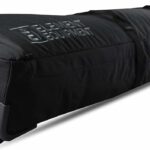So you’ve got a snowmobile and you’re keen on learning how to test its oil pump? Don’t worry, figuring it out isn’t as hard as you might think. In fact, it’s a process that can be done fairly quickly with the right tools and directions. Before starting, just remember that safety comes first— always wear your gloves and eye protection, okay? By the end of this article, you’ll be armed with the knowledge to conduct this test yourself, without needing to visit your local mechanic. So, let’s get your snowmobile in top shape!
Understand the Importance of Snowmobile Oil Pump Testing
As a responsible snowmobile owner, you’re bound to realize the importance of maintaining all aspects of your vehicle. Of these, the oil pump is a key player in ensuring your ride’s smooth functioning. Especially when it’s cold out and you’re gliding across snowy terrain, the oil pump takes on an even more significant role.
Significance of the Oil Pump in a Snowmobile
A snowmobile’s oil pump serves a vital role in the vehicle’s operation. The primary function is to continuously circulate and distribute oil in the engine, ensuring all parts are adequately lubricated. This not only reduces friction but also dramatically extends the engine’s lifespan. Thus, consistent oil pump testing becomes a prerequisite in periodic snowmobile maintenance.
Potential Issues from a Faulty Oil Pump
If unnoticed and unchecked, a faulty oil pump can lead to multiple issues, often exacerbating to cause severe damages. When it malfunctions, it can lead to insufficient oil flow, causing inadequate lubrication. This can, in turn, trigger excessive friction and heat buildup, wearing components down prematurely. A worst-case scenario could involve the engine seizing altogether, thereby posing potential safety risks while also necessitating costly repairs.
Essential Tools Needed
Before launching into the procedure of testing your snowmobile oil pump, ensure you have all the necessary tools on hand.
List of Essential Tools for Testing
Your testing toolkit should include a variety of items such as a torque wrench, pliers, flat-head screwdrivers, a pressure gauge, an RPM gauge, and a flow gauge. You might also need to source specific tools as per your snowmobile’s make and model.
Where to Purchase or Rent These Tools
You can find these tools at any standard hardware shop. However, if you aren’t planning to use them frequently, renting them can be a cost-effective option. Look up tool rental services in your area to find the best options. Remember to select high-quality tools for accurate testing and results.
Safety Precautions
With an activity like oil pump testing, safety cannot be compromised on. Follow these guidelines to ensure you’re taking all necessary precautions.
Use of Protective Gear
Always don safety glasses, gloves, and closed shoes while handling your snowmobile for testing.
Safe Workspace Setup
Ensure your workspace is clean, well-lit, and spacious. Preferably, it should be away from sources of flames or sparks.
Pre-Test Checks on the Snowmobile
Before you start testing, do a quick rundown of the snowmobile condition. Check for loose wires, leaks, or any other abnormalities.
Accessing the Snowmobile Oil Pump
Testing requires you to gain access to the oil pump. Once you’ve taken safety precautions and assembled your tools, you can begin this process.
Detailed Steps on Reaching the Oil Pump
Open the hood of your snowmobile to spot the engine. Usually, the oil pump is located on the side of the engine. Depending on the model, some disassembling might be required. Refer to your vehicle’s manual to ensure you do this correctly.
Tips and Tricks for Easier Access
It’s wise to organize the parts you remove in a safe place and in the order of their removal. This ensures easy reassembly. Moreover, utilizing a phone or camera to snap pictures at critical steps can be a practical reference guide.
Visual Inspection
Once you’ve reached the oil pump, a preliminary visual inspection can give you some initial insights.
What to Look for During a Visual Inspection
Examine the oil pump for obvious signs of damage, cracks, or leakages. Check for any loose connections or parts. Also, ensure the oil pump drive gear isn’t stripped or malfunctioning.
Signs of Wear and Tear
Look out for signs of wear like discoloration or deformities on the pump.
Signs of Oil Leakage
Marks of dried or fresh oil near the pump can hint at leakages.
Conducting a Pressure Test
A pressure test is the next step in your testing procedure.
How to Perform a Pressure Test
Connect a suitable oil pressure gauge to the oil pump output. Start your vehicle and let it idle, gradually increasing the RPM. All throughout, monitor the gauge for pressure readings.
Interpreting Pressure Test Results
Your model’s specific manual can guide you to comprehend these gauge readings. Lower or inconsistent pressure readings spell trouble for the oil pump. In such a case, you might want to take it to a professional or consider replacing it.
Performing a Flow Test
Just like the pressure test, a flow test also reveals a lot about your oil pump’s efficiency.
Steps to Conduct a Flow Test
Disconnect the oil line and attach a flow gauge inline. Start the vehicle, slowly increasing the RPM. Observe the oil flow rate as indicated by the gauge.
Interpreting Flow Test Results
Once again, refer to your model’s manual to understand the correct oil flow rates. If the readings don’t align, your oil pump might need attention.
Additional Tests if Necessary
If you’re still unsure about your oil pump condition, you could perform additional tests.
Cold Start Test and Its Process
A cold start test involves observing your snowmobile performance upon starting in cold temperatures. It helps gauge the oil pump’s adequacy in providing necessary lubrication during these conditions.
Various Other Tests to Ascertain the Oil Pump’s Condition
You also can monitor your oil consumption rate or check for engine friction for more insight into the oil pump’s functionality.
Analyzing the Test Results
The culmination of all these tests helps you determine your oil pump’s condition.
How to Determine if the Oil Pump is Working Properly
If your checks and readings align with what’s outlined in the model’s manual and there are no signs of wear or leakages, your oil pump is likely in good health.
Signs That the Oil Pump Needs Repair or Replacement
Possibly, if your test results produce discrepancies, experience lower engine performance, or see considerable oil leakage, you might need to repair or replace your oil pump.
Post Testing Process
Once your testing is done, there’s still some work to do.
Reassembling the Snowmobile Post-Test
Refer to your original photo guide or the vehicle’s manual to correctly reassemble your snowmobile. Keep track of the parts, handle them carefully, and avoid over-tightening to maintain their integrity.
Maintaining the Oil Pump for Longevity
Ensure regular maintenance of your snowmobile, including frequent oil changes and oil pump inspection. Regular maintenance can ward off severe damage and maintain your oil pump’s longevity.
In essence, understanding your snowmobile’s oil pump and its testing can significantly contribute to its performance and lifespan. Equipped with proper knowledge, tools, and attention to safety, you can perform this task independently, saving cost while also deepening your knowledge.
- What Snowboard Bindings Should I Get? - January 23, 2024
- What Size Screws For Snowboard Bindings? - January 23, 2024
- How To Snowmobile On Water? - January 23, 2024










